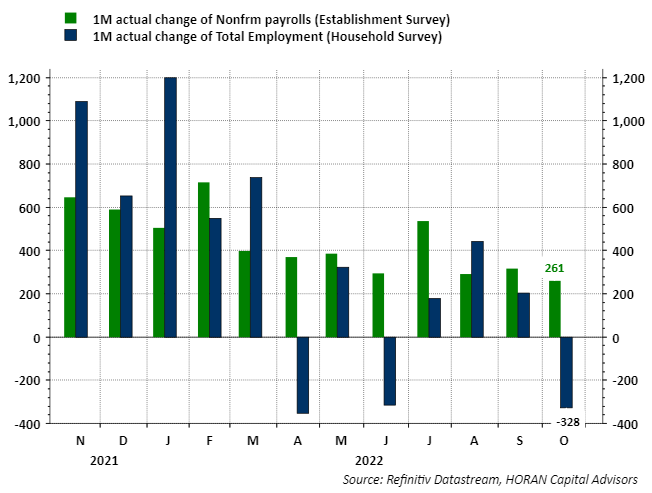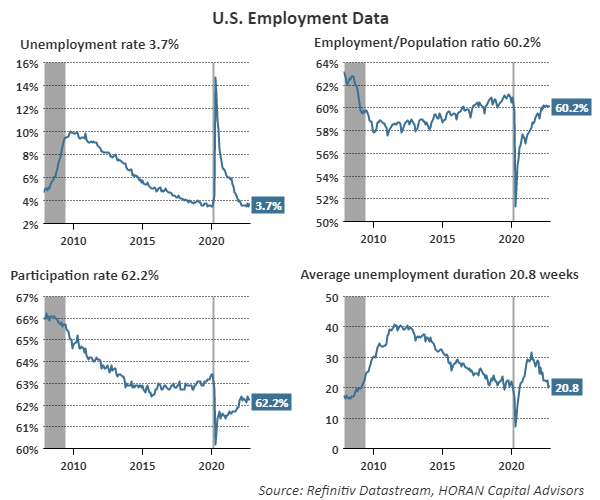Employment Data Nearing Recession Signal
This past week the Federal Reserve instituted another 75 basis point (.75%) Fed Funds rate hike, the fourth of this magnitude and the six hike this year. These rate hikes are an effort by the Fed to rein in inflation by making it more expensive to spend or finance purchases and more expensive for businesses to invest in its operations. Another consequence of attempting to reduce demand is the general level of employment in the economy likely declines. And to that point, last week's report on payrolls in the U.S. noted October nonfarm payrolls exceeded expectations and increased by 233 thousand. However, also included in the Employment Situation report is detail from the broader Household Survey and employment declined 328 thousand.
(Click on image to enlarge)

The Household Survey data is used to calculate some of the unemployment statistics including the unemployment rate, which rose to 3.7% from 3.5% in September. The below chart is one of several our firm evaluates to provide insight into the economy to determine whether it is slowing or the economy dipping into a recession. Broadly, if the unemployment level in the economy increases, this removes potential demand from the economy; hence, a slowdown or recession may unfold. As the chart shows, when the unemployment rate crosses above its 12-month moving average, this is one data point that has indicated a recession might be unfolding. Clearly, the unemployment rate is flattening and possibly beginning an uptrend with both the rate and average now equaling 3.7%.
(Click on image to enlarge)

Another data point from the Employment Situation report saw the participation rate decline to 62.2%, down from 62.3% in September and 62.4% in August. This is another indication the job market is weakening.
(Click on image to enlarge)

The current economic environment finds the demand side of the economy may be less of the issue versus the supply side. The pandemic disrupted the supply chain for many companies and shortages are a result. New car inventory remains low, diesel inventory is running low, shortages of butter and other areas are experiencing supply issues. The Fed's interest rate tightening program, by resulting in lower employment, might equally damage the supply side of the economy in that manufacturing employment declines as well. Certainly a difficult time in reading the tea leaves on the economic front.
More By This Author:
Dogs Of The Dow: An Outperforming Strategy In 2022Dogs Of The Dow: A Leading Strategy In 2022
Job Market May Be Weakening
Disclaimer: The information and content should not be construed as a recommendation to invest or trade in any type of security. Neither the information nor any opinion expressed constitutes a ...
more


